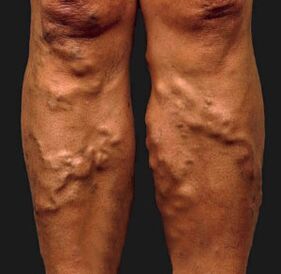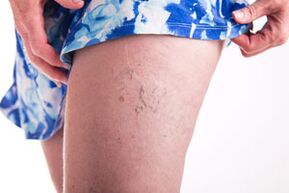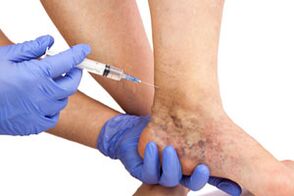
When violating the blood of the veins, the pressure in the veins increases, they begin to develop and become visible under the skin.Varicose diseases more often affect the lower veins, but can occur anywhere in the human body.
A general feature
Varicosis in the feet can affect men and women of all ages, but are more often found in middle -aged and elderly patients.Varicose veins are a very common disease.Up to 15% of older men and almost all old women experience the disease.
Risk factors for pathological development:
- presence of illness in close relatives;
- SEDENTARI LIFE;
- overweight;
- Long staying in a standing position;
- Pregnancy.
The cause of varicose veins
The cause of varicose veins is not fully studied.In some cases, poor blood flow through the veins is due to the absence or weakness of the blood vessel valve located at the depth of the fabric.Also, lower leg varicose veins and other organs can be caused by the vascular wall weakness itself.
Less common, varicose veins in the feet are associated with the following conditions:
- transferred inflammation of the veins (phlebitis);
- the formation of blood clots in the vein;
- Congenital anomalies in blood vessels.
The disease is characterized by progressive courses and cannot be fully cured.However, there is a relatively effective prevention of varicose veins - the use of compression socks, maintaining normal weight and normal physical activity, especially walking or swimming.The dynamic load of the foot helps the muscles push the blood on the veins, and does not give the opposite leakage.
Classification of varicose veins

Depending on the location of the pathological modified vessel, the form of varicose veins is distinguished:
- Small pelvic varicose veins in women;
- lower leg vein;
- development of esophagus veins during liver pathology;
- Posttrombopbititis option in different organs.
There is a level of varicose veins:
- Compensation: no complaints, the veins expanded to the feet can be seen;
- Subcompensation: Patients complain of swelling, rupture, severe feet, seizures at night;
- Decision: Skin changes develop - hyperpigmentation, signs of chronic inflammation, trophic ulcer.
The clinic often uses CEAP classification, describing clinical signs, causes, localization of lesions and types of blood flow disorders.
Symptoms of varicose veins
In the early stages of the patient, only aesthetic discomfort concerns.In the future they join:
- pain, seizures, itching -skin;
- swelling, especially in the evening, severity and fatigue in the feet;
- Feeling broken.
Less frequently, but more serious symptoms include:
- subcutaneous bleeding from broken veins;
- thrombophlebitis;
- trophic ulcer;
- "Wet" dermatitis;
- Cicatricial changes in the skin.
This complication is much worse for treatment than the pathology in the early stages.
To explore veins in the feet and get varicose veins, you should contact a vascular surgeon or phlebologist.Diagnosis should include ultrasound dopplerography to assess blood flow, vessel walls, valve tools.
Varicose vein treatment

Methods of how to treat varicose veins depend on the size and location of the changed veins, the presence of symptoms and skin changes.Varicose vein treatment is carried out using a variety of methods:
- the position of the foot raised in a lie or sitting position;
- the use of specially selected compression knitwear;
- sclerotherapy (introduction of special drugs in the lumen with the formation of blood vessels and subsequent destruction of the veins);
- pathological modified veins using laser, radio frequency and other techniques;
- Treatment of varicose veins in the feet - phlebectomy.
In the early stages of the disease, doctors will prescribe medications for varicose veins for oral or external use:
- tablets from varicose veins;
- Ointment from varicose veins with anti -inflammation, venotonics, anticoagulants and other useful effects.
In addition, many patients use varicose vein treatment on the feet with folk remedies:
- Review of alcohol from horse chestnut or kalanchoe leaves to rub and compress;
- compresses from tomatoes, cabbages, kalanchoe;
- Infusions of Herbs - Nettles, Yarrow, Chamomile and St.John's Wort, raspberry sheets, and Alteen Root.
Prevention
To avoid or slow down the development of varicose veins, doctors recommend to adhere to the preventive rules:
- Periodic lifting feet to the pillow;
- prolonged position of position;
- the use of preventive knitwear, which can be selected at pharmacies or medical stores;
- normal physical activity (walking);
- weight control;
- If necessary, stand for a long time - do simple exercises (rolling from foot to heel, climbing socks, rotation).
Such steps will contribute to the mechanical reduction in the load on the vein, increased vein valve and vascular wall preservation.


















